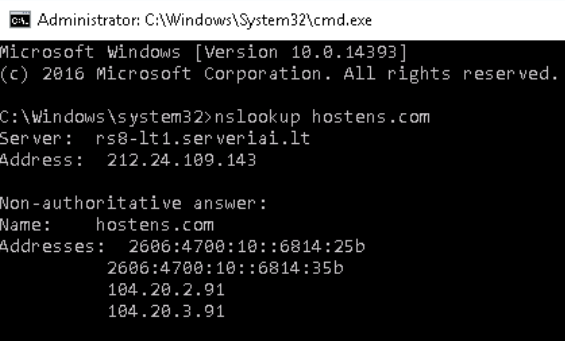How to Get DNS Records
Understanding DNS records is crucial for website owners and administrators, as they play a vital role in the functioning of the internet. DNS, which stands for Domain Name System, is responsible for translating domain names into IP addresses, allowing users to access websites through easy-to-remember domain names instead of complex numerical IP addresses.
In this guide, we will walk you through the process of obtaining DNS records for your domain, whether you are looking to troubleshoot DNS issues, set up new services, or simply better understand how your website works behind the scenes.
Types of DNS Records
Before we delve into how to get DNS records, it is essential to understand the different types of DNS records that exist. Some common types of DNS records include:
- A Record: Associates a domain name with an IPv4 address.
- AAAA Record: Associates a domain name with an IPv6 address.
- CNAME Record: Specifies an alias for a domain name.
- MX Record: Specifies mail servers responsible for receiving email on behalf of a domain.
- TXT Record: Stores text-based information related to a domain.
How to Retrieve DNS Records
There are multiple ways to retrieve DNS records for a domain. Here are some common methods:
Using Command Line Tools
One of the most straightforward ways to get DNS records is by using command line tools such as nslookup or dig. These tools are preinstalled on most operating systems and can provide detailed information about a domain’s DNS settings.
Using Online DNS Lookup Tools
Alternatively, you can use online DNS lookup tools such as DNSstuff, MXToolBox, or UltraTools to retrieve DNS records for a domain. These tools offer user-friendly interfaces and can provide comprehensive DNS information quickly.
Interpreting DNS Records
Once you have obtained DNS records for your domain, it is essential to understand how to interpret them. Pay attention to the following elements:
- TTL (Time-to-Live): Specifies how long a DNS record can be cached by recursive resolvers.
- Priority: Applies to MX records and determines the order in which mail servers should be used for email delivery.
- Content: Contains the actual data associated with the DNS record type.
Conclusion
Getting DNS records for your domain is a fundamental aspect of managing your online presence. By understanding how DNS works and how to interpret DNS records, you can troubleshoot issues more effectively, set up new services with confidence, and gain a deeper insight into how the internet functions behind the scenes.
Whether you are a seasoned webmaster or a beginner, knowing how to retrieve and interpret DNS records is a valuable skill that can enhance your overall web development knowledge. Use the tips and tools mentioned in this guide to get started on your DNS journey today!
